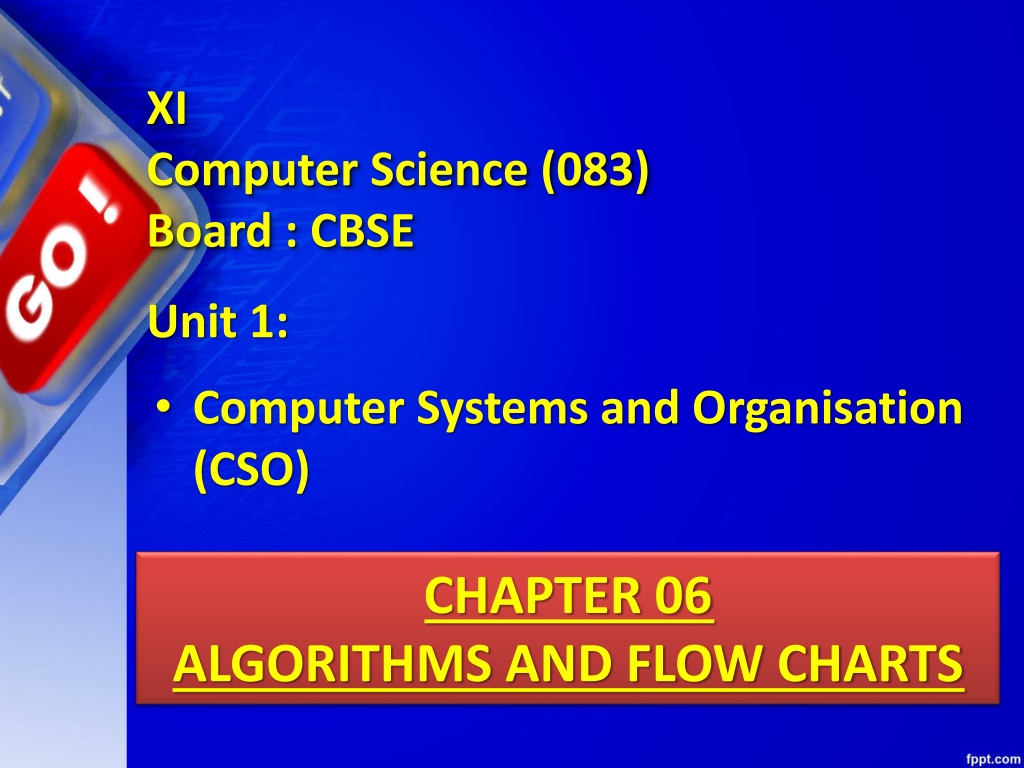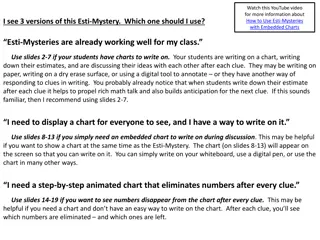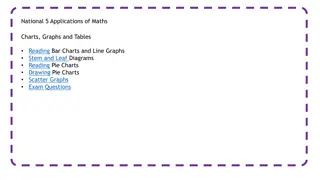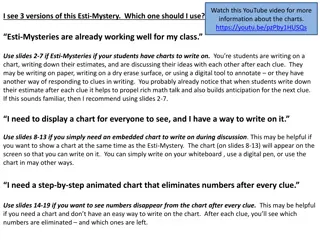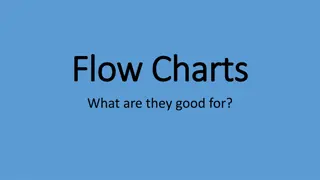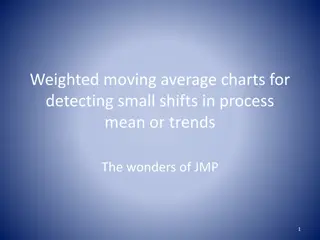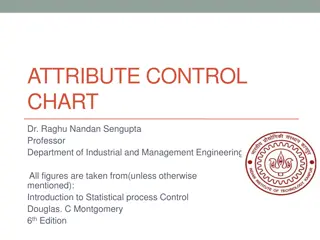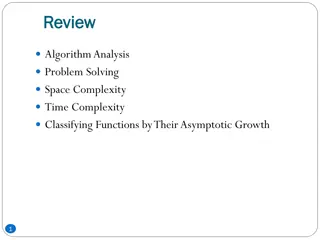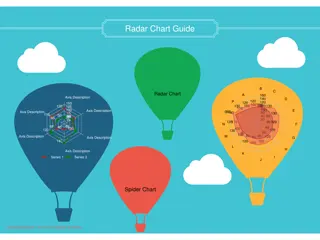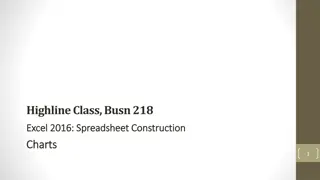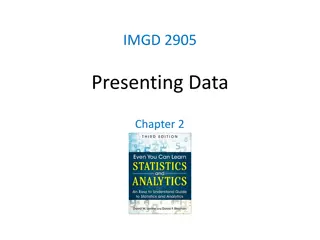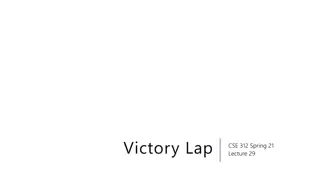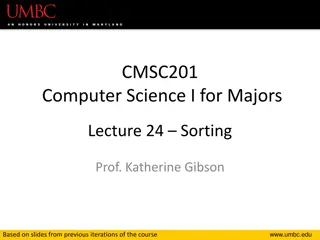Understanding Algorithms and Flow Charts in Computer Science: A Comprehensive Overview
Learn about the fundamentals of algorithms and flow charts in computer science with a focus on problem-solving techniques, algorithm definition, flow chart symbolism, and conversion between algorithms and flow charts. Explore the intelligence characteristics that set humans apart, illustrated through practical examples like financial decision-making processes. Enhance your understanding of computer systems and organization through this insightful unit.
Download Presentation

Please find below an Image/Link to download the presentation.
The content on the website is provided AS IS for your information and personal use only. It may not be sold, licensed, or shared on other websites without obtaining consent from the author. Download presentation by click this link. If you encounter any issues during the download, it is possible that the publisher has removed the file from their server.
E N D
Presentation Transcript
XI Computer Science (083) Board : CBSE Unit 1: Computer Systems and Organisation (CSO) CHAPTER 06 ALGORITHMS AND FLOW CHARTS
XI Computer Science (083) Board : CBSE Unit 1: Computer Systems and Organisation (CSO) Courtesy CBSE
Unit I Computer Systems and Organisation (CSO) 10 Theory + 02 Practical) Prepared by Praveen M Jigajinni DCSc & Engg, PGDCA,ADCA,MCA.MSc(IT),Mtech(IT),MPhil (Comp. Sci) Department of Computer Science, Sainik School Amaravathinagar Cell No: 9431453730 Courtesy CBSE
ALGORITHM AND FLOW CHART OBJECTIVES able to define problem; able to define algorithm; write algorithms for simple problems; explain properties of an algorithm; the meaning of flowchart; explain the need of flow chart; explain different symbols used in flow chart; draw flow chart for simple problems; and convert a flow chart into an algorithm and vice versa.
ALGORITHM AND FLOW CHART INTRODUCTION Intelligence characteristics which differentiate a human being from other living creatures on the earth. Basic intelligence covers day to day problem solving and making strategies to handle different situations which keep arising in day to day life. is one of the key
ALGORITHM AND FLOW CHART INTRODUCTION One person goes Bank to withdraw money. After knowing the balance in his account, he/she decides to withdraw the entire amount from his account but he/she has to leave minimum balance in his account.
ALGORITHM AND FLOW CHART INTRODUCTION Here deciding about how much amount he/she may withdraw from the account is one of the example of the basic intelligence. During the process of solving any problem, one tries to find the necessary steps to be taken in a sequence.
ALGORITHM AND FLOW CHART What is Algorithm? Algorithm can be defined as: A sequ ence of activities to be processed for getti ng desired output from a given input.
ALGORITHM AND FLOW CHART What is Algorithm? Webopedia defines an algorithm as: A formula or set of steps for solving a particularproblem. To be an algorithm, a set of rules must be unambiguous and have a cl ear stopping point .
MUHAMMAD IBN MUSA AL-KHWARIZMI Mu ammad ibn M s al- Khw rizm (Persian: ; c. 780 Formerly Latinized as Algoritmi, was a Persian scholar who produced works in mathematics, astronomy, & geography under the patronage of the Caliph Al-Ma'mun the Abbasid Caliphate. c. 850), of Around 820 AD he was appointed as the astronomer and head of the library of the Wisdom in Baghdad. House of
PROPERTIES OF ALGORITHM Donald Ervin Knuth has given a list of five properties for an algorithm, these properties are: 1) FINITENESS 2) DEFINITENESS 3) INPUT 4) OUTPUT 5) EFFECTIVENESS
PROPERTIES OF ALGORITHM 1) FINITENESS: An algorithm must always terminate after a finite number of steps. It means after every step one reach closer to solution of the problem and after a finite number of steps algorithm reaches to an end point.
PROPERTIES OF ALGORITHM 2) DEFINITENESS Each step of an algorithm must be precisely defined. It is done by well thought actions to be performed at each step of the algorithm. Also the actions are defined unambiguously for each activity in the algorithm.
PROPERTIES OF ALGORITHM 3) INPUT Any operation you perform need some beginning value/quantities associated with different activities in the operation. So the value/quantities are given to the algorithm before it begins.
PROPERTIES OF ALGORITHM 4) OUTPUT: One (expected value/quantities) in terms of output from an algorithm. The result may be obtained at different stages of the algorithm. If some result is from the intermediate stage of the operation then it is known as intermediate result and result obtained at the end of algorithm is known as end result. The output is expected value/quantities always have a specified relation to the inputs. always expects output/result
PROPERTIES OF ALGORITHM 5) EFFECTIVENESS: Algorithms to be developed/written using basic operations. Actually operations should be basic, so that even they can in principle be done exactly and in a finite amount of time by a person, by using paper and pencil only.
PROPERTIES OF ALGORITHM Any algorithm should have all these five properties otherwise it will not fulfil the basic objective of solving a problem in finite time. As you have seen in previous examples, every step of an algorithm puts you closer to the solution
ALGORITHM EXAMPLES Let us take one simple day-to-day example by writing algorithm for making, Maggi Noodles as a food. Step 1: Start Step 2: Take pan with water Step 3: Put pan on the burner Step 4: Switch on the gas/burner Step 5: Put magi and masala Step 6: Give two minutes to boil Step 7: Take off the pan Step 8: Take out the magi with the help of fork/spoon Step 9: Put the maggi on the plate and serve it Step 10: Stop.
ALGORITHM EXAMPLES Write an algorithm to print GoodMorning Step 1: Step 2: Step 3: Start Print Good Morning Stop
ALGORITHM EXAMPLES Write an algorithm to find area of a rectangle. Step 1: Step 2: Step 3: Step 4: Step 5: Start Take length and breadth and store them as L and B? Multiply by L and B and store it in area Print area Stop
ALGORITHM EXAMPLES Write an algorithm to check whether he is eligible to vote? (more than or equal to 18 years old). Step 1: Step 2: Step 3: Start Take age and store it in age Check age value, if age >= 18 then go to step 4 else step 5 Print Eligible to vote and go to step 6 Print Not eligible to vote Stop Step 4: Step 5: Step 6:
ALGORITHM EXAMPLES Write an algorithm to check whether given number is +ve, -ve or zero. Step 1: Start Step 2: Take any number and store it in n. Step 3: Check n value, if n > 0 then go to step 5 else go to step 4 Step 4: Check n value, if n < 0 then go to step 6 else go to step 7
ALGORITHM EXAMPLES Write an algorithm to check whether given number is +ve, -ve or zero. Step 5: Step 6: Step 7: Step 8: Print Given number is +ve and go to step 8 Print Given number is -ve and go to step 8 Print Given number is zero Stop
FLOWCHART The flowchart is a diagram which visually pre sents the flow of data through processing systems. This means by seeing a flow chart o ne can know the operations performed and the sequence of these operations in a syste m. Algorithms are nothing but sequence of steps for solving problems. So a flow chart ca n be used for representing an algorithm. A flowchart, will describe the operations (and in what sequence) to solve a given problem. are required
FLOWCHART A flowchart is a type of diagram that represents an algorithm, process. The flowchart shows the steps as boxes of various kinds, and their order by connecting the boxes with arrows. This diagrammatic representation illustrates a solution model to a given Flowcharts are used in analyzing, designing, documenting or managing a process or program in various fields. workflow or problem.
BUILDING BLOCKS OF FLOW CHART OR COMMON SYMBOLS OF FLOW CHART
BUILDING BLOCKS OF FLOW CHART The Institute (ANSI) set standards for flowcharts and their symbols 1960s. The International Organization for Standardization(ISO) adopted the ANSI symbols in 1970. The current standard was revised in 1985. Generally, flowcharts flow from top to bottom and left to right. American National Standards in the
BUILDING BLOCKS OF FLOW CHART ANSI/ISO Shape Name Description Shows the process's order of operation. A line coming from one symbol and pointing at another. Arrowheads are added if the flow is not the standard top-to-bottom, left- to right. Flowline (Arrowhead)
BUILDING BLOCKS OF FLOW CHART ANSI/ISO Shape Name Description Indicates the beginning and ending of a program or sub-process. Represented as a stadium, oval or rounded (fillet) rectangle. They usually contain the word "Start" or "End", or another phrase signaling the start or end of a process, such as "submit inquiry" product". Terminal or "receive
BUILDING BLOCKS OF FLOW CHART ANSI/ISO Shape Name Description Represents a set of operations that changes value, form, or location of data. Represented as a rectangle Process
BUILDING BLOCKS OF FLOW CHART ANSI/ISO Shape Name Description Shows a conditional operation that determines which one of the two paths the program will take. The operation is commonly a yes/no question or true/false Represented as (rhombus). Decision test. a diamond
BUILDING BLOCKS OF FLOW CHART ANSI/ISO Shape Name Description Indicates the process of inputting and outputting data, as in entering data or displaying Represented as a parallelogram Input / results. Output
BUILDING BLOCKS OF FLOW CHART ANSI/ISO Shape Name Description Indicating information about a step the program. Represented as an open rectangle with a dashed or solid line connecting it to the corresponding symbol in the flowchart. additional Annotation (Comment)
BUILDING BLOCKS OF FLOW CHART ANSI/ISO Shape Name Description Shows /Function which is defined elsewhere. Represented as a rectangle with double- struck vertical edges. named process Predefined Process Functions
Flowchart Line.svg BUILDING BLOCKS OF FLOW CHART ANSI/ISO Shape Name Description Pairs of labelled connectors replace long or confusing lines on a flowchart page. Represented by a small circle with a letter inside. On-page Connector
BUILDING BLOCKS OF FLOW CHART ANSI/ISO Shape Name Description A labelled connector for use when the target is on another page. Represented as a home shaped pentagon. Off-page Connector plate-
BUILDING BLOCKS OF FLOW CHART ANSI/ISO Shape Name Description Storage/ Backup Magnetic Tape used for sec ondary storage/Backup
BUILDING BLOCKS OF FLOW CHART ANSI/ISO Shape Name Description Storage/ Backup Magnetic Disk used for sec ondary storage/Backup
ADVANTAGES OF USING FLOWCHARTS As we discussed flow chart is used for representing algorithm in pictorial form. This pictorial representation of a solution/system is advantages. These advantages are as follows: having many 1. COMMUNICATION. 2. EFFECTIVE ANALYSIS. 3. DOCUMENTATION OF PROGRAM/SYSTEM. 4. EFFICIENT PROGRAM MAINTENANCE. 5. CODING OF THE PROGRAM.
ADVANTAGES OF USING FLOWCHARTS 1. COMMUNICATION: A Flowchart can be used as a better way of communication of the logic of a system and steps involve in the solution, to all concerned particularly to the client of system.
ADVANTAGES OF USING FLOWCHARTS 2. EFFECTIVE ANALYSIS: A flowchart of a problem can be used for effective analysis of the problem.
ADVANTAGES OF USING FLOWCHARTS 3.DOCUMENTATION OF PROGRAM/ SYSTEM: Program flowcharts are a vital part of a good program documentation. Program document is used for various purposes like knowing the components in the program, complexity of the program etc.
ADVANTAGES OF USING FLOWCHARTS 4. EFFICIENT PROGRAM MAINTENANCE: Once a program is developed and becomes operational it needs time to time maintenance. With help of flowchart maintenance become easier.
ADVANTAGES OF USING FLOWCHARTS 5. CODING OF THE PROGRAM: Any design of solution of a problem is finally converted into computer program. Writing code referring the flowchart of the solution become easy.
LIMITATIONS OF USING FLOWCHARTS 1) COMPLEXITY OF LOGIC: If program logic is complex then flowchart of the program becomes complicated. 2) ALTERATIONS AND MODIFICATIONS IN LOGIC: any alterations in the program logic may require redrawing of flowchart completely. 3) REUSE IS NOT POSSIBLE: As the flowchart symbols cannot be typed, always reproduction of flowchart symbols are required.
FLOWCHART EXAMPLES Draw a flowchart to find the simple interest. (Sequence)
FLOWCHART EXAMPLES Draw a flowchart to find bigger number among two numbers (selective)
FLOWCHART EXAMPLES Draw a flow chart to find factorial of any number.
